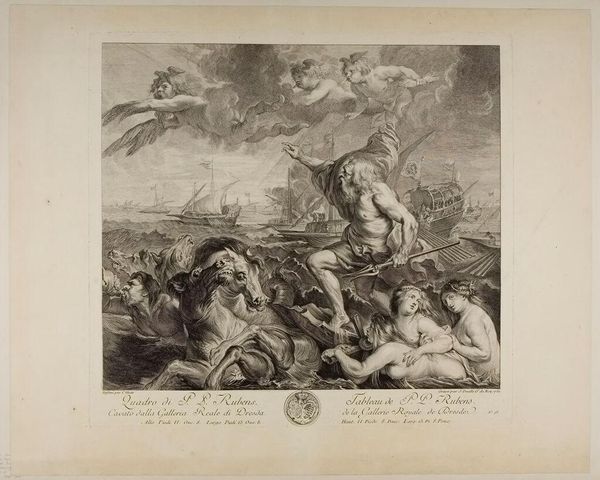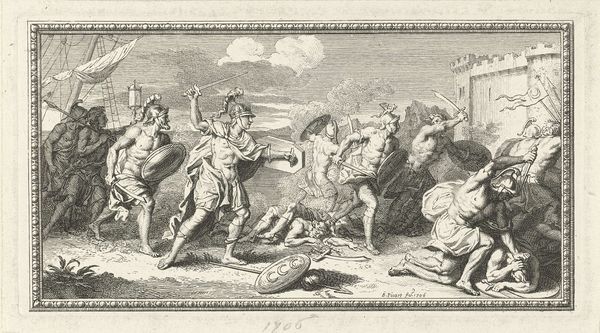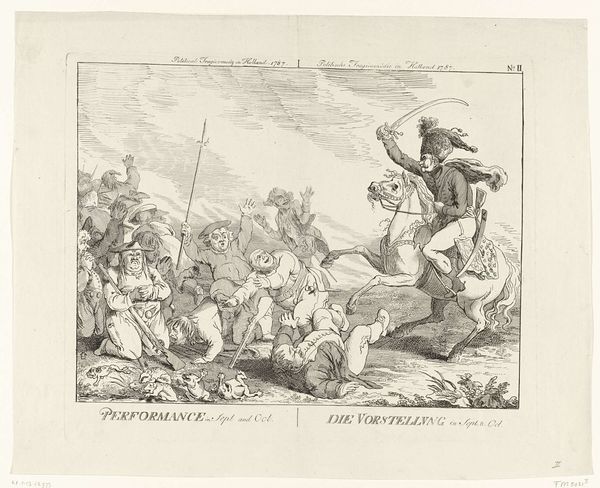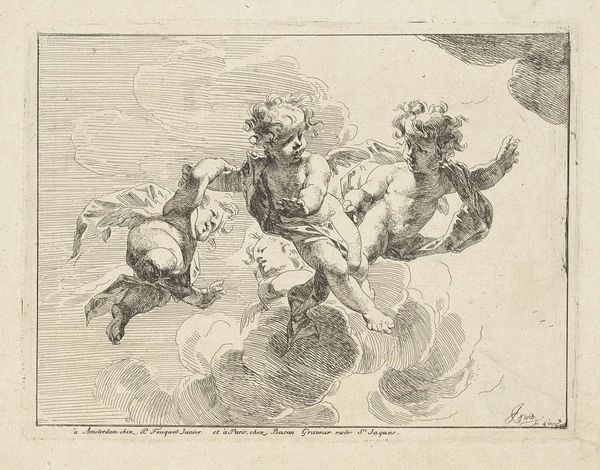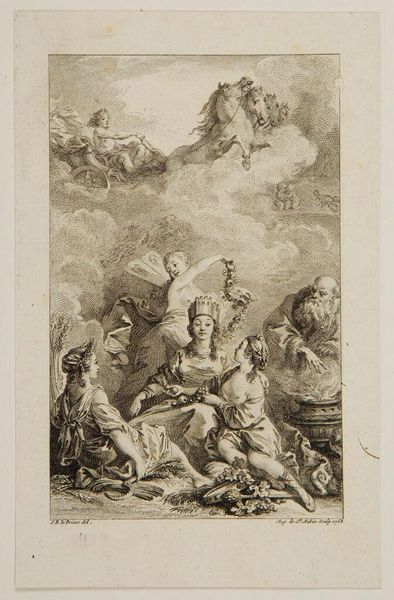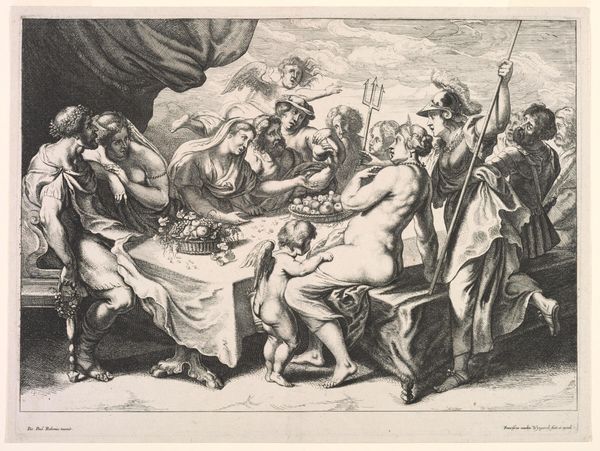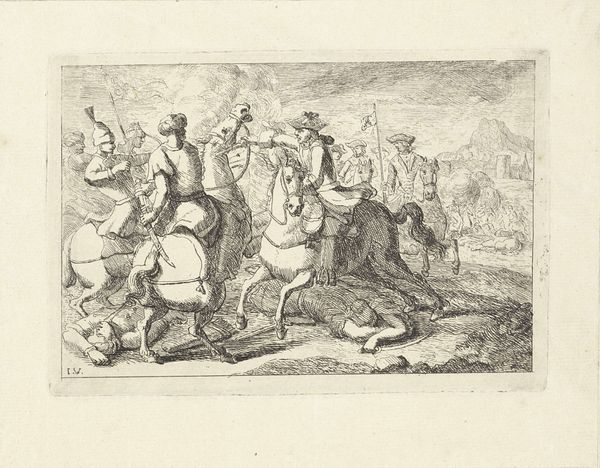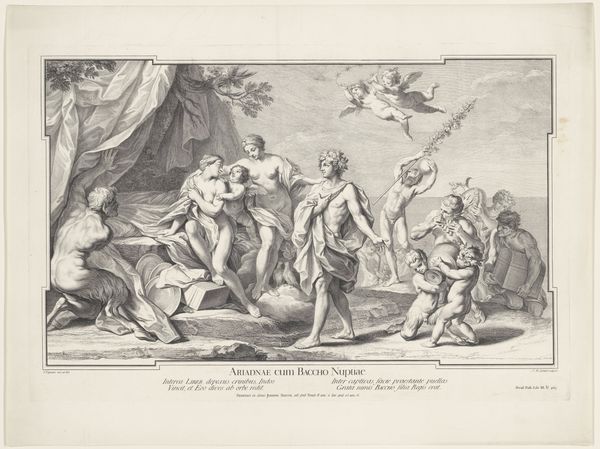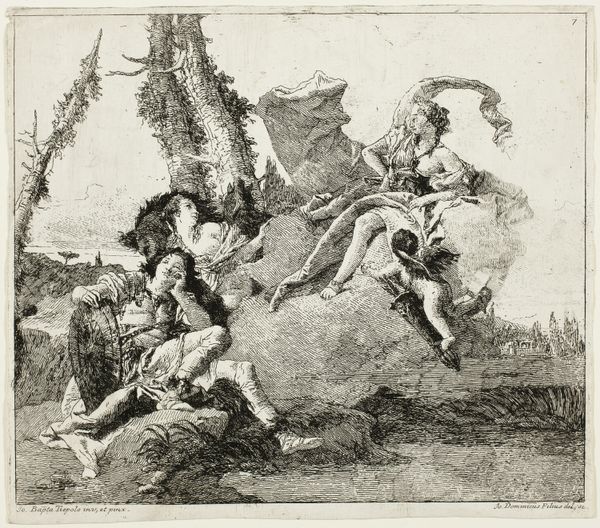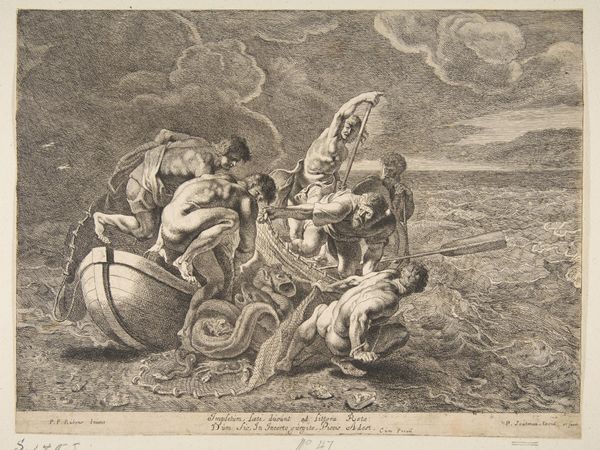
Dimensions: height 362 mm, width 443 mm
Copyright: Rijks Museum: Open Domain
Editor: Right now, we’re looking at a print titled "Neptunus en Thetis" by Jacopo Leonardis, created around 1765. It's a flurry of figures! A kind of...aquatic commotion. What’s your take on this bustling scene? Curator: Well, you know, sometimes I think these Baroque prints are like elaborate dreams captured on paper. It's not just a depiction of Neptune and Thetis, but an explosion of classical mythology filtered through Leonardis's own sensibility. I see this sort of delicate chaos, an almost celebratory sense of abundance, bursting from the linear constraints of the engraving. Doesn't the composition make you feel swept away? Editor: It does feel overwhelming. There’s so much movement! But is there any deeper meaning beneath all the waves and characters? Curator: Absolutely. Consider the era. The 18th century was obsessed with grand narratives and allegory. Neptune and Thetis represent power, the sea's dominion. They are serene amidst chaos. Though what do you think the inclusion of so many other figures – cupids and sea nymphs and the like – adds to the story? Editor: It makes it feel less like a portrait of power, more like...a party? Almost frivolous. Curator: Exactly! Maybe Leonardis isn't just glorifying power, but also offering a playful, slightly ironic commentary on it. The Baroque loved those contradictions. So much of this style walks a tightrope between the divine and the downright silly! Editor: I hadn’t thought of it that way. It is rather playful when you mention the "silly" nature. Seeing it that way helps to engage me. Curator: Yes, now when I look, I keep imagining the sounds in this scene, so active with so much happening. So interesting to experience. Editor: It definitely gives a new appreciation for just how intricate these prints were. Thanks!
Comments
No comments
Be the first to comment and join the conversation on the ultimate creative platform.
